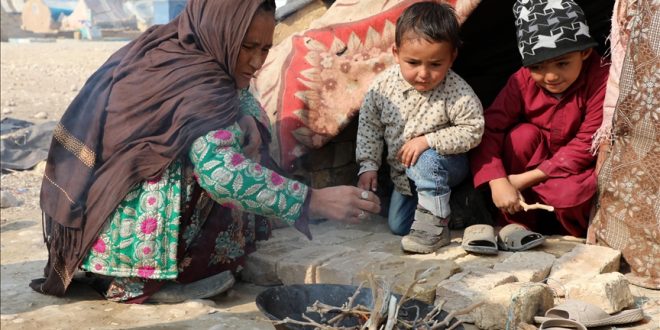AT
Kabul: Nearly 16 million Afghan people in acute food insecurity, including 3.5 million people at emergency levels, according to UN’s World Food Program.
Afghanistan is one of several countries around the world in the grip of a food crisis, where a mix of politics, economics and nature’s ravages are taking a heavy toll on vast sections of a vulnerable population.
In a country emerging from decades of war and turmoil, women and children are among those particularly impacted by biting food insecurity, according to the UN’s World Food Program (WFP).
Currently, a third of the Afghan population, or nearly 16 million people, are going hungry, and every province is at crisis levels of food insecurity, or higher, according to the UN agency.
UN figures paint a grim picture for women and girls, with an estimated 1 million malnourished, pregnant and breastfeeding women in Afghanistan in 2023.
Around 2 million girls and boys under the age of 5 were facing moderate acute malnutrition, and nearly 860,000 girls and boys under 5 had severe acute malnutrition.
In Afghanistan, according to the WFP, food is available in most parts of the country, even in the smaller remote districts.
The challenge is that families, including, and in most cases, women and girls, cannot access it because they do not have the money to buy it.
Curbs imposed on women’s employment have severely impacted households where women are the main providers.
“Mothers here are relying a lot on borrowing food and money, both from shopkeepers and also from relatives,” said the WFP official.
“They are at the brink and they have very few opportunities left to look after themselves and their children.”
A major issue is that, in 2023, the WFP had a massive funding shortfall that forced it to drop around 10 million people from assistance programs in Afghanistan.
These included 1.4 million women and children who did not receive any specialized food anymore to prevent and treat malnutrition, said WFP spokesman, adding that the agency is still facing a “big funding crisis.”
This is not a case of “playing one humanitarian crisis against the other,” he asserted, but the number of crises around the globe have left “many more people in need of emergency food assistance.”
In previous comments on the aid cuts, Taliban spokesman Zabihullah Mujahid said Afghanistan’s economic situation was “normal” but impacted by the “40 years of war in the country.”
“Climate change and droughts have affected the agriculture sector and social security to some extent,” said Abdul Rahmad Habib, a ministry spokesman, stressing that “dealing with climate change” is a key government priority.
“Suddenly, winter came with meters of snow and hundreds of livestock perished. So, these are the long-term challenges that we are seeing in Afghanistan.”
 Afghanistan Times
Afghanistan Times




